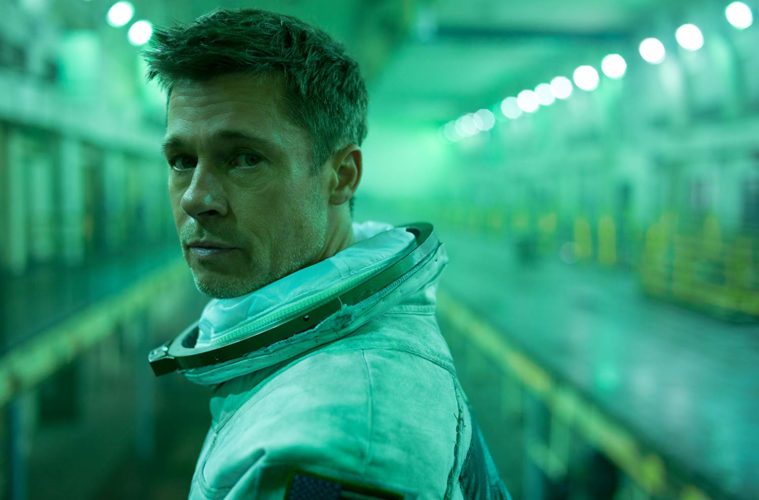Ad Astra is finally here. Lifting off this week at the Venice film festival with enormous ambitions if somewhat limited thrust, James Gray’s long-awaited sci-fi adaptation of Joseph Conrad’s Heart of Darkness (that nicely malleable of texts) expands like a supernova without ever quite inspiring the introspection it needs to thrive. The result is a rarity that should be seen, regardless. It’s a deeply personal film about human nature from a beloved filmmaker who has been given the largest canvas imaginable–with all the trimmings–that ultimately proves a bit of a slog.
Set in the near future, Gray’s seventh film as director (it was co-written with recent collaborator Ethan Gross) follows the story of a man who is sent to the edges of the solar system to find the one person potentially capable of saving Earth from impending doom: his dad. Brad Pitt stars as Major Roy McBride, an astronaut of the First Man/Neil Armstrong variety—that is to say: cool as a cucumber and about as dull as one, too. Tommy Lee Jones plays Clifford McBride, his old man (the Kurtz to his Marlow), the captain of a legendary mission to Neptune who went missing almost twenty odd years prior.

It is a remarkable production: Hoyte van Hoytema’s cinematography finds beauty in the glares and shadows; Pitt commands the screen with little more than nice uniforms and pure charisma; Max Richter and Lorne Balfe provide a characteristically moving score. The sets alone are a treasure trove of retro-futurist design, a blend of the late ’60s utopianism of movies like 2001 alongside the weathered tech of Christopher Nolan’s Interstellar. (Hoytema shot both, making Nolan’s film an auspicious presence throughout. Donald Sutherland even arrives in the Michael Caine role.)
Working with by far his biggest budget to date, Gray harnesses those talents to produce a spectacular if flawed anomaly: an idiosyncratically strange, slow-paced auteur project, although one that cost 90 million to make–and that money shows. Astra begins, for instance, with an enormous set piece on the International Space Antenna–a Babelian structure made in the hope of contacting distant life forms–that echoes the opening to Cuarón’s Gravity with all its flying debris and flailing human bodies. Later sections reveal intriguing colonies on the Moon and Mars.

Without saying too much, McBride’s journey does allow for some of the film’s best moments—an Arbies on the moon here, a brilliantly set-designed recording booth on Mars there–and Gray even has fun with the idea of commercial space travel as something passé or even grotesque. Ad Astra is, for all other intents and purposes, as straight-faced as they come, a film that considers the big questions of interplanetary travel and contact but signposts its conclusions too early–and can’t help getting bogged down by them. The sense that home is where the heart is plays like the film’s leitmotif and while the director is certainly getting at something here with regards to our relationship with whatever’s out there, it is at best a familiar take and at worst a rather plodding one.
Yes, Ad Astra is finally with us. It’s huge. It’s personal. It’s sometimes stunning. And it is, ultimately, just satisfactory.
Ad Astra premiered at the Venice Film Festival and opens on September 20.

